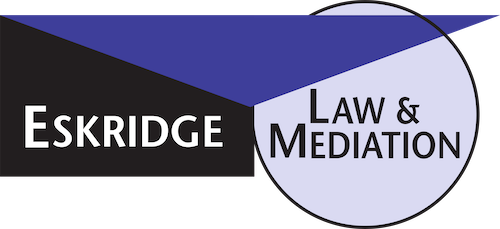By Gayle Eskridge, member, LACBA Professional Responsibility and Ethics Committee, and Kymiya St. Pierre, both of Eskridge Law. Ms. Eskridge can be reached at geskridge@eskridgelaw.net. The opinions expressed below are her own.
Most attorneys have experienced the attorney-client relationship terminating prior to resolving the matter for which the attorney was hired. Once representation ends, the attorney has certain obligations which must be fulfilled prior to withdrawing as counsel, including taking “reasonable steps to avoid foreseeable prejudice” to the client’s rights. [Rules of Prof. Conduct, rule 3-700(A)(2).] These obligations include the obvious tasks of advising the client regarding upcoming dates and deadlines in the client’s matter. In addition, they include the duty to release the client file back to the client or to the client’s new attorney. California Rules of Professional Conduct, rule 3-700(D) provides, in pertinent part:
Papers, Property, and Fees.
A member whose employment has terminated shall:
(1) Subject to any protective order or non-disclosure agreement, promptly release to the client, at the request of the client, all the client papers and property. “Client papers and property” includes correspondence, pleadings, deposition transcripts, exhibits, physical evidence, expert’s reports, and other items reasonably necessary to the client’s representation, whether the client has paid for them or not; and
(2) Promptly refund any part of a fee paid in advance that has not been earned. This provision is not applicable to a true retainer fee which is paid solely for the purpose of ensuring the availability of the member for that matter.
[Emphasis added.] The ABA Model Rules of Professional Conduct, which have been adopted by most states (although not by California) are consistent with rule 3-700. ABA Model Rules of Professional Conduct, rule 1.16(d), provides: “Upon termination of representation, a lawyer shall take steps to the extent reasonably practicable to protect a client’s interests, such as . . . surrendering papers and property to which the client is entitled . . . . The lawyer may retain papers relating to the client to the extent permitted by other law.”Practically speaking, the attorney releasing the client file faces a multitude of options in determining not only what needs to be released, but in what format the items need to be released. Although rule 3-700 delineates, to some degree, the specificity of “client papers and property,” (“correspondence, pleadings, deposition transcripts, exhibits, physical evidence, expert’s reports”), rule 3-700 is silent as to the form of these documents. Keeping in mind, however, that the ultimate goal of the attorney is to ensure that he/she is taking reasonable steps to avoid foreseeable prejudice of the client’s rights, this generally necessitates a broader interpretation of what items are considered part of the client’s file, and the format of such items.
Thus, for instance, if the nature and location of the items are emails or electronically stored documents, and discovery on a computer database or on the Web, it is likely the attorney will need to provide copies to the former client to avoid foreseeable prejudice to the client’s interests. In fact, upon the client’s request, a terminated attorney must promptly release the electronic versions of email correspondence, pleadings, discovery requests and responses, deposition and exhibit databases, and transactional documents. (The client does not need to specifically request electronically stored documents.) [Cal. State Bar Form.Opn. 2007-174.]
It is, of course, the general rule that “[a] writing that reflects an attorney’s impressions, conclusions, opinions, or legal research or theories is not discoverable under any circumstances.” [Code Civ. Proc. § 2018.030(a).] An attorney may, however, have an ethical obligation to disclose attorney work product to the client when transferring the file if the information is necessary to avoid reasonable prejudice to the client’s rights. [San Diego Bar Ass’n Form.Opn. 1997-1; Los Angeles Bar Ass’n Form.Opns. 330 (1972) and 405 (1982).]
Fortunately, “the attorney’s obligation is to release items, not to create them or to change the application.” [Cal. State Bar Form.Opn. 2007-174; emphasis in original.] Thus, although the attorney must release the items, he/she does not need to make them available in any other application or format other than the one in which the attorney already possesses them.
Another concern attorneys face is the unavoidable costs associated with releasing the client file. It is important to note that the client’s need for the materials is not weighed against the attorney’s expense of copying and transferring the client’s file, including transferring electronic files. It is simply specified that the client’s need for the documents requires the attorney to release the items to avoid reasonably foreseeable prejudice to the client’s rights. Attorneys may not charge the former client for copying the file unless the fee agreement provides for this. [Rules of Prof. Conduct, rule 3-700(D), Discussion: “Paragraph (D) is not intended to prohibit a member from making, at the member’s own expense, and retaining copies of papers released to the client, nor to prohibit a claim for the recovery of the member’s expense in any subsequent legal proceeding.”]
Of course, if the attorney unreasonably delays releasing the client’s file, or refuses to release a client’s file after being notified of the substitution, this constitutes grounds for disciplinary action. [See, Rules of Prof. Conduct, rule 3-700(D), and rule 4-100(B)(4): “A member shall: . . . Promptly pay or deliver, as requested by the client, any funds, securities, or other properties in the possession of the member which the client is entitled to receive.”] It is also crucial to note that where an attorney’s failure to return a client’s file results in damage to the client, the attorney may also be liable for malpractice. Thus, to determine what and how a client’s file should be released, an attorney should foremost consider the client’s rights, and take all necessary action to ensure that “reasonable steps to avoid foreseeable prejudice” to the client’s rights have been taken.
